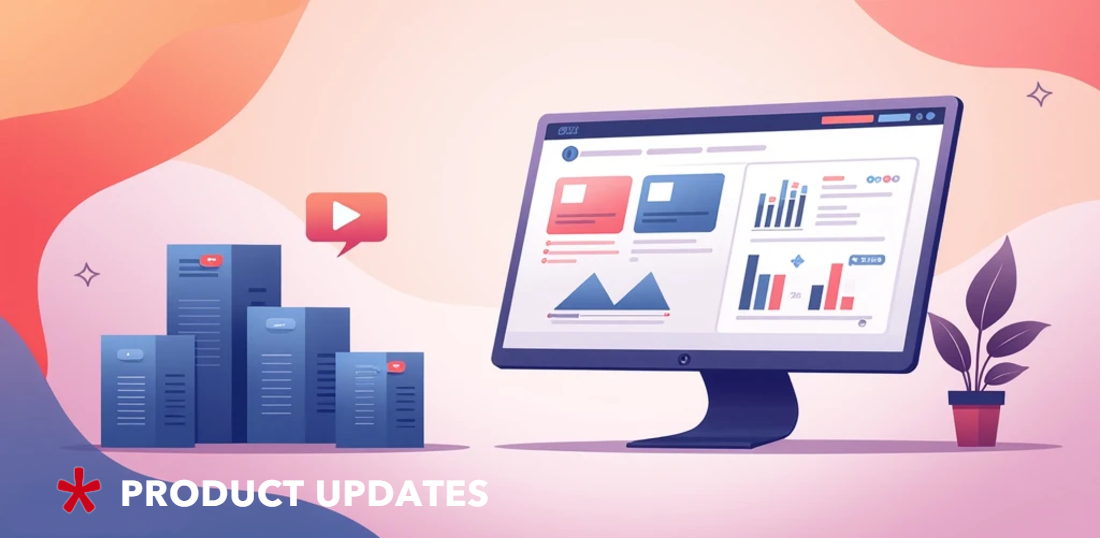
Case Study: How to Define and Reach the Audience in a Post-Demographic Age
The digital economy has created an explosion of data. The increase of data points has generated a bunch of pathways and signals that can expand targeting possibilities for brands.
Specifically, advertisers could go beyond standard demographic segmentation, like “female 25-34”, and use more sophisticated approaches to determine target audiences. What defines audience groups in 2019 is their online behaviour, the way how they interact with content, promo materials, and brands’ digital touch points. Knowledge of audience’s context is the essential component helping brands and agencies re-invent their approach to identifying target audience, media planning and buying.
Taking this into account, leading programmatic agencies improve their practices of audiences’ building to get the maximum outcomes for their clients.
One of the cases that Admixer Technologies develops together with Amplifi – Amnet Ukraine agency illustrates how this approach helps them to get the most of their programmatic buying and all the challenges and pitfalls they face on their way to get such results.
Challenges:
The biggest pain brands experience due to audience generalization is overpayment through buying not relevant users or buying the same people with the excessive frequency. To address this problem, Amplifi-Amnet Ukraine had to overcome a bunch of challenges.
- Previous approach to audience buying didn’t meet brands’ criteria
The agency tried a lot of different strategies and optimization scenarios, but all of them didn’t play well. They had to discover new opportunities and new ways to utilize data to achieve better results.
- Lack of detailed raw data
In order to optimize media spend or segment the audience in a more sophisticated way, agency needed more granular, more detailed data about the users and their activities. In most cases Amplifi-Amnet Ukraine got from DSPs only aggregated data, which they couldn’t tackle in the way they want to.
- Finding the right solution to integrate and map audiences from different sources
To achieve the best results, the agency needed to combine data from different siloed sources. Integration of all sources is a challenging process, with no guarantee of success.
- Data activation across the relevant channels
In omnichannel world it’s essential to reach the target audiences across the channels that this audience prefers. So one of the important aspects of the solution is providing an opportunity to work with various channels.
- Enhancing data management capabilities
Having their own agency’s tools for data analysis and segmentation, Amnet Ukraine – Amplifi needed to expand area of application and have the ability to implement brand’ logics to build target audiences.
The goal
The main goal was to create less excessive but more relevant to user behaviour messaging. Achieving this goal was in line with addressing three tasks:
- To bind together user’s engagements with the brand and provide a holistic view of user journey
- To develop appropriate messaging strategy that correlates with the user position on the path [сustomer journey path]
- Optimize media spend relying on more detailed analysis of audiences, inventory and context
Solution
The main idea behind the goal was to create messaging strategy that is more relevant to the user’s position on customer path. To achieve this, the agency had to understand the stage where the customer is on the purchase way at the moment, and provide the relevant message according to this.
In order to implement such strategy, we needed to bind together two kinds of user activities – engagements with brands’ ads in the upper funnel, and interactions with the brand touch points in the bottom funnel.

In other words, we had to create the holistic view of the customer journey letting us consider every user that comes into funnel and correlate our communication strategy with user activity.
Implementation
We led the agency through 3 major stages:
Stage1: Creating audience groups allowing them to collect users by various criteria and different targeting options, both from the ad campaigns and advertiser’s sites.
Stage 2: At the second stage we add data points from users touch points with brand and use them to define the best performing audiences from the sales standpoint.
Stage 3: After collecting the data from all the interaction points, agency analyzes it and optimizes media buying strategies using this information.

As a result, agency got new audiences for onboarding into DMP and relevant scenarios for further purchases in Admixer.DSP.
Results
Agency used media indicators to evaluate the results of buying strategy optimization. The main KPIs, that agency checked at this level, were engagement of the target audience with promo materials and advertisers websites, as well as traffic performance in cases where conversions were on the site.

As a result of the case, Amplifi-Amnet Ukraine reached several important goals:
- divided audience reach between stages
- got less reach and less messaging on every stage
- made messaging more relevant to each user
- spent less budgets
Afterwards, these insights can be used not only to tighten campaigns to precise targeting, but also to outline where and when to invest media spend for maximum impact.
Background
Amplifi-Amnet Ukraine is media innovation and investment group of Dentsu Aegis Network responsible for generating value across all media opportunities. Amplifi harnesses technology, insight and creative thinking and works collaboratively with clients, media and tech owners to create an uplift in business outcomes, delivering against the mission of ‘Value for All’.
Admixer Technologies took part in the case as an ad-tech provider and technology consultant for building data flow and audience activation solution. The Admixer products that were used in the scheme are Admixer.DSP (with built-in data management tools), Admixer.DMP and Raw Data API.
If you are interested in data management capabilities, send your inquiry to Ivan Fedorov, Head of Admixer DMP for a consultancy: ifedorov@admixer.com.





